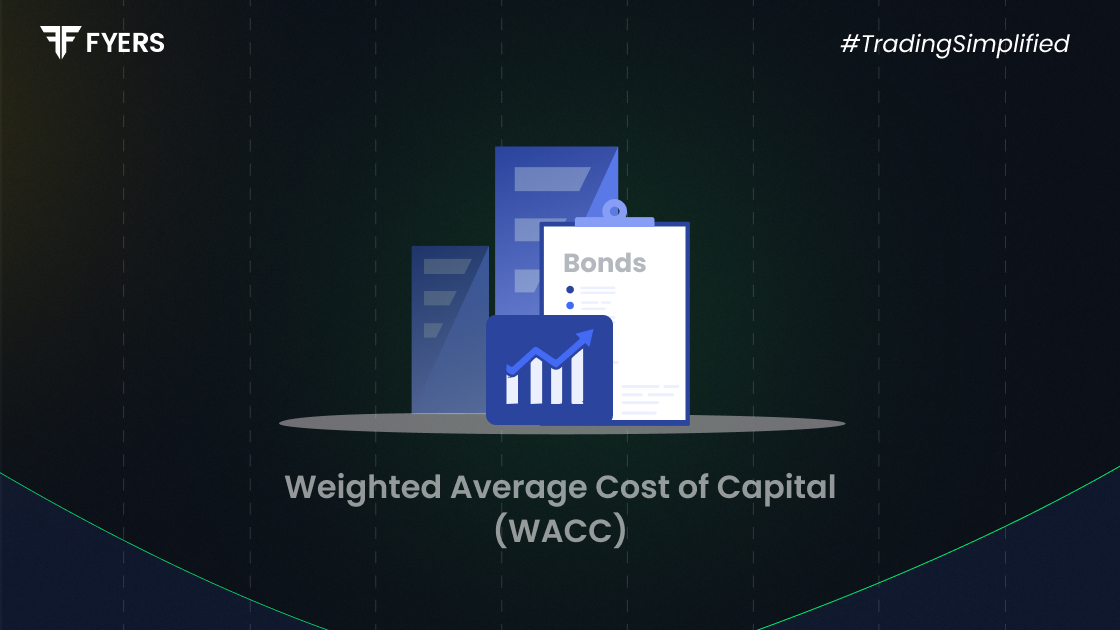

 30 Jul, 2025
30 Jul, 2025
 4 mins read
4 mins read

Weighted Average Cost of Capital (WACC) is a cornerstone concept in corporate finance, used to evaluate investment opportunities and value companies. It represents the average rate a company expects to pay to finance its assets, weighted according to the proportion of debt and equity. Understanding WACC is essential for financial decision-making, whether you're an investor, analyst, or business owner.
WACC is the average rate of return a company must earn on its investments to maintain its current value. It reflects the cost of capital from all sources, including equity and debt. By accounting for the relative weight of each component in the company's capital structure, WACC gives a comprehensive picture of the firm's financing cost.
In simpler terms, if a company is funded by both debt and equity, WACC is the blended rate it pays to raise money from these sources.
The basic formula for WACC is:
|
WACC = (E / V × Re) + (D / V × Rd × (1 - Tc)) |
Where:
E = Market value of equity
D = Market value of debt
V = Total market value of the company's financing (E + D)
Re = Cost of equity
Rd = Cost of debt
Tc = Corporate tax rate
Cost of Equity (Re): Return investors expect for investing in the company’s equity.
Cost of Debt (Rd): Interest the company pays on its borrowings.
Tax Shield (1 - Tc): Interest is tax-deductible, which reduces the cost of debt.
Let's break down the steps to calculate WACC:
Determine Market Values: Find the market value of equity (E) and debt (D).
Calculate the Weights: Compute E/V and D/V.
Estimate Cost of Equity (Re): Use models like the Capital Asset Pricing Model (CAPM).
Determine Cost of Debt (Rd): Use average interest rates on existing or expected borrowings.
Apply Corporate Tax Rate (Tc): Include the benefit of interest tax deduction.
Insert Values into the WACC Formula and Calculate
Example:
Suppose a company has:
Equity = ₹500 crore, Cost of Equity = 12%
Debt = ₹300 crore, Cost of Debt = 8%
Corporate Tax Rate = 30%
V = 500 + 300 = 800
WACC = (500 / 800 × 12%) + (300 / 800 × 8% × (1 - 0.30))
WACC = 7.5% + 2.1% = 9.6%
So, the WACC is 9.6%.
WACC plays a critical role in:
Investment Appraisal: Used as the discount rate in Net Present Value (NPV) calculations.
Valuation Models: Fundamental in Discounted Cash Flow (DCF) analysis to value businesses.
Capital Budgeting: Helps in selecting projects that generate returns above WACC.
Performance Benchmark: Acts as a hurdle rate to evaluate managerial performance.
A company should undertake projects with expected returns higher than its WACC to create shareholder value.
Several factors influence WACC, including:
Capital Structure: A higher proportion of debt may lower WACC due to tax benefits.
Market Conditions: Interest rate changes impact the cost of debt and equity.
Company Risk Profile: Higher risk increases the cost of equity.
Tax Rate: A higher corporate tax rate reduces the after-tax cost of debt.
Investor Expectations: Rising return expectations push up WACC.
Despite its usefulness, WACC has certain limitations:
Assumes Constant Capital Structure: Real-world financing mix can change.
Market-Based Inputs Vary: Estimations for cost of equity can be subjective.
Not Always Suitable for All Divisions: A company with varied risk profiles across departments should use adjusted WACCs.
Sensitive to Input Errors: Small changes in estimates can significantly affect the result.
Weighted Average Cost of Capital is more than a formula; it is a vital tool in financial strategy. It helps companies assess the cost of funding and ensures investments generate sufficient returns. By understanding WACC, stakeholders can make better capital allocation decisions, improve financial planning, and increase shareholder value. While not perfect, it remains indispensable in evaluating both day-to-day and long-term financial choices.
WACC is the average rate a company pays to finance its assets, taking into account both debt and equity. It helps assess whether a business or investment is generating enough return to cover its cost of capital.
A "good" WACC depends on the industry and market conditions. Generally, a lower WACC is preferred as it means cheaper capital. However, it should always be compared to the expected return on investment.
In practice, WACC is rarely negative. For it to be so, either the cost of debt or equity would have to be negative, which is uncommon. A negative WACC would suggest the company is being paid to borrow or invest, which is unrealistic.
Yes, WACC can change as market conditions, interest rates, company risk profiles, or capital structures evolve. Regular recalculation ensures accurate financial planning and valuation.
Calculate your Net P&L after deducting all the charges like Tax, Brokerage, etc.
Find your required margin.
Calculate the average price you paid for a stock and determine your total cost.
Estimate your investment growth. Calculate potential returns on one-time investments.
Forecast your investment returns. Understand potential growth with regular contributions.